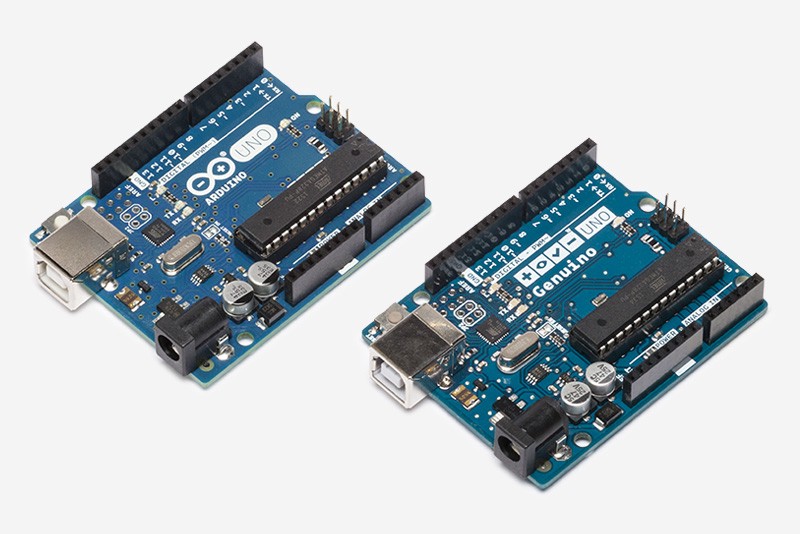
A microcontroller is a computer present in a single
integrated circuit that is dedicated to perform one task and execute one
specific application.
A microcontroller contains memory, programmable input/output
peripherals as well a processor. Microcontrollers are mostly designed for
embedded applications and are heavily used in automatically controlled
electronic devices such as cellphones, cameras, microwave ovens, washing
machines, etc.
A few microcontrollers may utilize four-bit expressions and work at clock rate frequencies, which usually include:
- - An 8 or 16-bit microprocessor.
- - A little measure of RAM.
- - Programmable ROM and flash memory.
- - Parallel and serial I/O.
- - Timers and signal generators.
- - Analog to Digital and Digital to Analog conversion
Microcontrollers usually must have low-power requirements since many devices they control are battery-operated. Microcontrollers are used in many consumer electronics, car engines, computer peripherals, and test or measurement equipment. And these are well suited for long lasting battery applications. The dominant part of microcontrollers being used nowadays is implanted in other apparatus.
Types of Microcontrollers
Microcontrollers are divided into various categories based on memory, architecture, bits, and instruction sets. Following is the list of their types.
Bit
Based on bit configuration, the microcontroller is further
divided into three categories.
- - 8-bit microcontroller − This type of
microcontroller is used to execute arithmetic and logical operations like
addition, subtraction, multiplication division, etc. For example, Intel 8031
and 8051 are 8 bits microcontrollers.
- - 16-bit microcontroller − This type of
microcontroller is used to perform arithmetic and logical operations where
higher accuracy and performance are required. For example, Intel 8096 is a
16-bit microcontroller.
- 32-bit microcontroller − This type of microcontroller is generally used in automatically controlled appliances like automatic operational machines, medical appliances, etc
Memory
Based on the memory configuration, the microcontroller is further divided into two categories.
- - External memory microcontroller − This type of microcontroller is designed in such a way that they do not have a program memory on the chip. Hence, it is named an external memory microcontroller. For example Intel 8031 microcontroller.
- Embedded memory microcontroller − This type of microcontroller is designed in such a way that the microcontroller has all programs and data memory, counters and timers interrupt, I/O ports are embedded on the chip. For example Intel 8051 microcontroller
Instruction Set
Based on the instruction set configuration, the
microcontroller is further divided into two categories.
- - CISC − CISC stands for complex instruction set computer. It allows the user to insert a single instruction as an alternative to many simple instructions.
- - RISC − RISC stands for Reduced Instruction Set
Computers. It reduces the operational time by shortening the clock cycle per
instruction.
Applications of Microcontrollers
- Microcontrollers are widely used in various different devices such as −
- - Light sensing and controlling devices like LED.
- - Temperature sensing and controlling devices like microwave ovens, chimneys.
- - Fire detection and safety devices like a Fire alarm.
- - Measuring devices like Volt Meter.
Microcontrollers vs. microprocessors
The distinction between microcontrollers and microprocessors has gotten less clear as chip density and complexity have become relatively cheap to manufacture and microcontrollers have thus integrated more "general computer" types of functionalities. On the whole, though, microcontrollers can be said to function usefully on their own, with a direct connection to sensors and actuators, where microprocessors are designed to maximize compute power on the chip, with internal bus connections (rather than direct I/O) to supporting hardware such as RAM and serial ports. Simply put, coffee makers use microcontrollers; desktop computers use microprocessors.
Choosing the right microcontroller
There are a number of technology and business considerations to keep in mind when choosing a microcontroller for a project.
Beyond cost, it is important to consider the maximum speed, amount of RAM or ROM, number or types of I/O pins on an MCU, as well as power consumption and constraints and development support.
We are your number one destination for quality and durable
Motherboards, Power supplies, Switches, Contactors, Automation Devices, as well
as other quality electronic components. Start sourcing for microcontrollers today.
 Share
Share